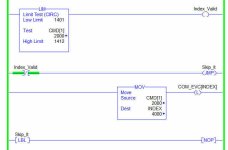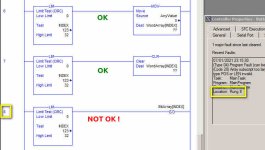I have a strange behavior, sometimes Major Fault Type 4 Code 20 occur, I know the reason, I used an array with a word index which can assume a wrong value but non in that ladder.
I know it is my mistake but the index is always correct when PLC faulted because the rung adjust the index before using it.
I also know this may happen when PLC startup because during pres-can the controller check the indirect addressing (also if ladder will not be executed).
I just have the Continuous Task (no periodic Task), I solved using a dedicated index but watch a "Type 4 Code 20" fault in a rung while index is within the limits it is strange for me.
It happens causally once in a while.
Someone can help me for future?
Tks.









